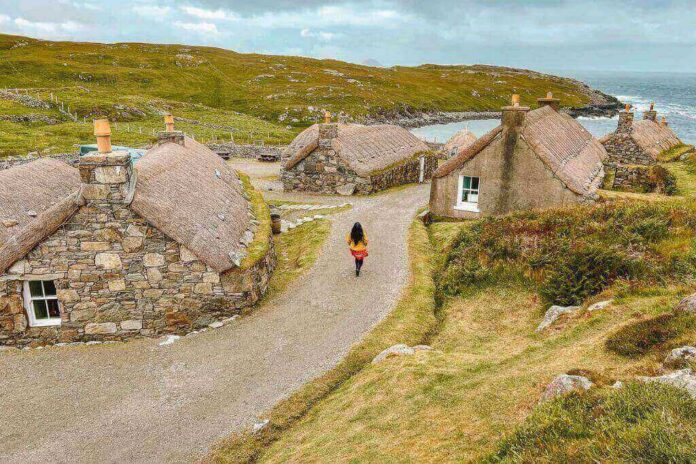The heart and spirit are immediately filled and never truly leave Scotland. This is also true of Lewis and Harris. You will be spellbound by this location and yearn for more. Yet even though Lewis and Harris are only 840 square miles, there is no shortage of things to do there.
1. Views at The Butt of Lewis, the Windiest Point in the UK, Will Astound You
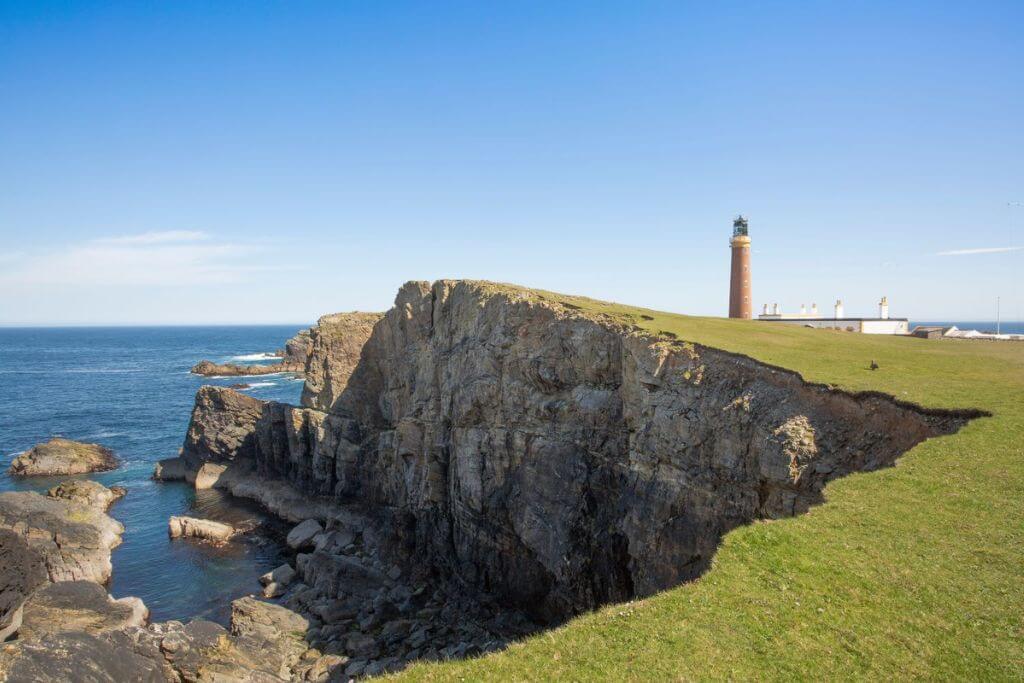
Nevertheless, despite having a silly name, it is one of the most picturesque—and windy—places you will ever have the pleasure of visiting. The Isle of Lewis’ northernmost point is the Butt of Lewis. Moreover, it has a 100 mph wind speed record, making it the windiest spot in the UK.
2. The Norse Mill: Discover an Ancient Way of Life
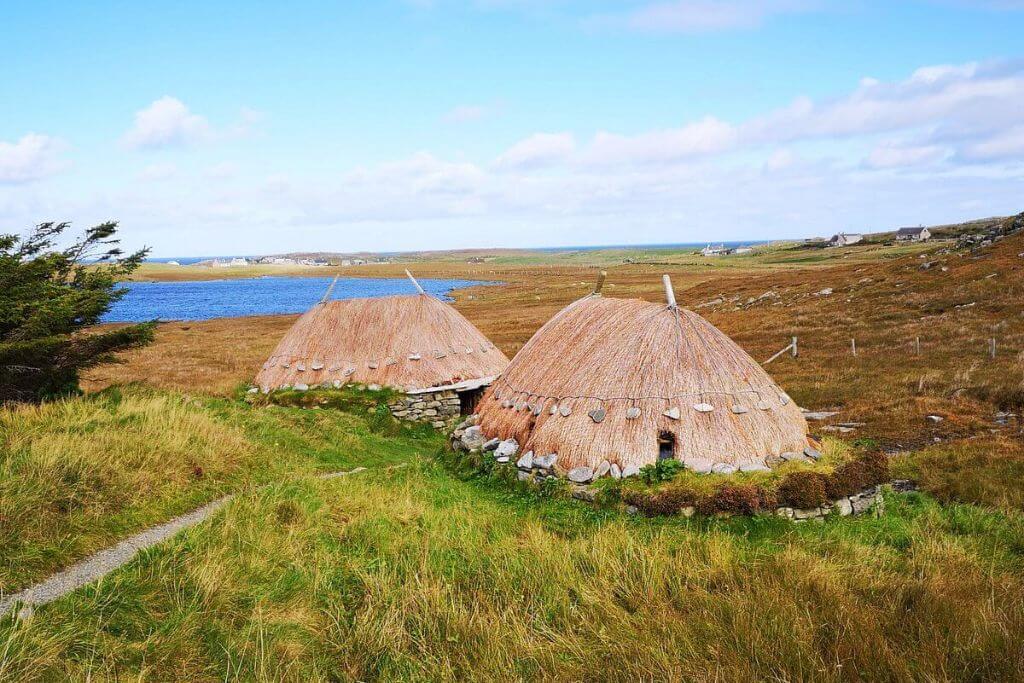
Actually, the Norse Mill at Shawbost is a reproduction of a real mill that previously stood there. The Norse Mill is open to the public for no cost, and it offers a glimpse of Lewis’s early residents’ way of life. The stone buildings are accessible via a tiny parking area and a lovely stroll. The surroundings are beautiful, and the stroll shouldn’t take you more than ten minutes.
Since the mill was powered by water, these mills were typically found close to a stream. The Vikings and the Iron Age both contributed to the design. Under the floor, a set of paddles were powered by the water. The millstone would next be turned in order to grind the barley or maize. Simple but powerful.
Although it may not be the most well-known or well-liked destination on Lewis, this place is definitely worth a visit because it offers an intriguing insight into a way of life that was widespread in the past.
3. Trek to Stac a’ Phris, Natural Sea Arch
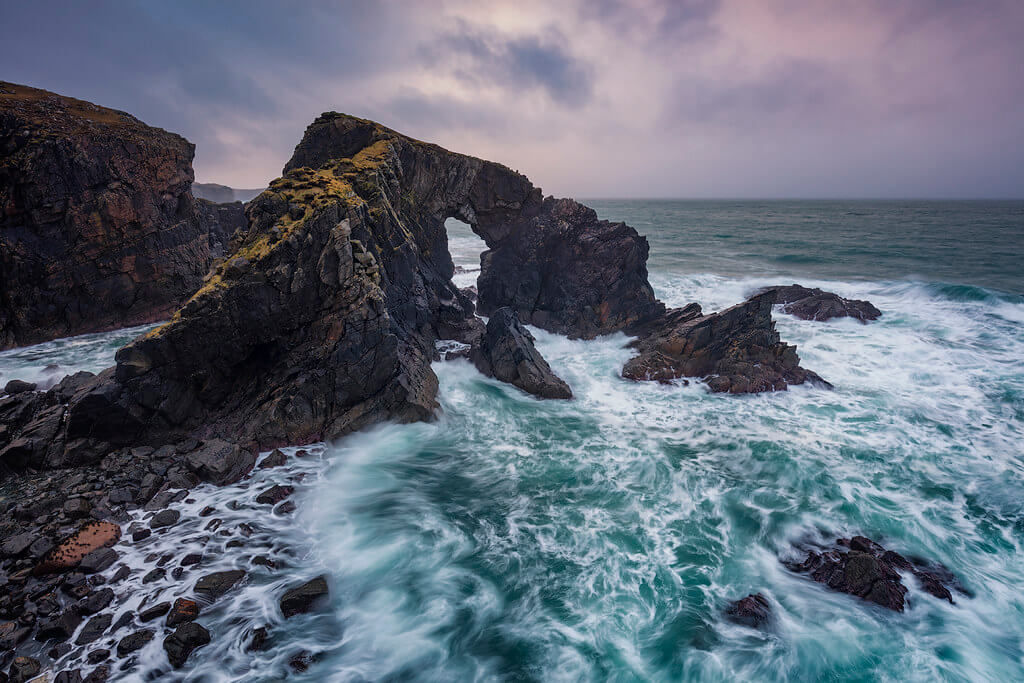
Stac a Phris can be reached from either the South or the North, technically.
From the south: As the Norse Mill has a secure parking lot, some people choose to walk there. If you walk this route, it should take you roughly 2 kilometers. Stac a Phris is more difficult to locate using this method because it seems to be hidden while approaching from the south. From the North, it is considerably simpler to view. And perhaps this path and these directions from Visit Outer Hebrides will be helpful if you wish to park at the Norse Mill.
From the north: An alternative approach is set out on foot from a little settlement off the A858 near the Allt na Muilne road. The lack of a parking lot is the problem here. You should be mindful that this is a residential area and respect people’s privacy. You should be able to locate a parking space at the end of the village, though, if you have a tiny car.
4. Visit The Gearrannan to learn about the history and heritage of crofting life
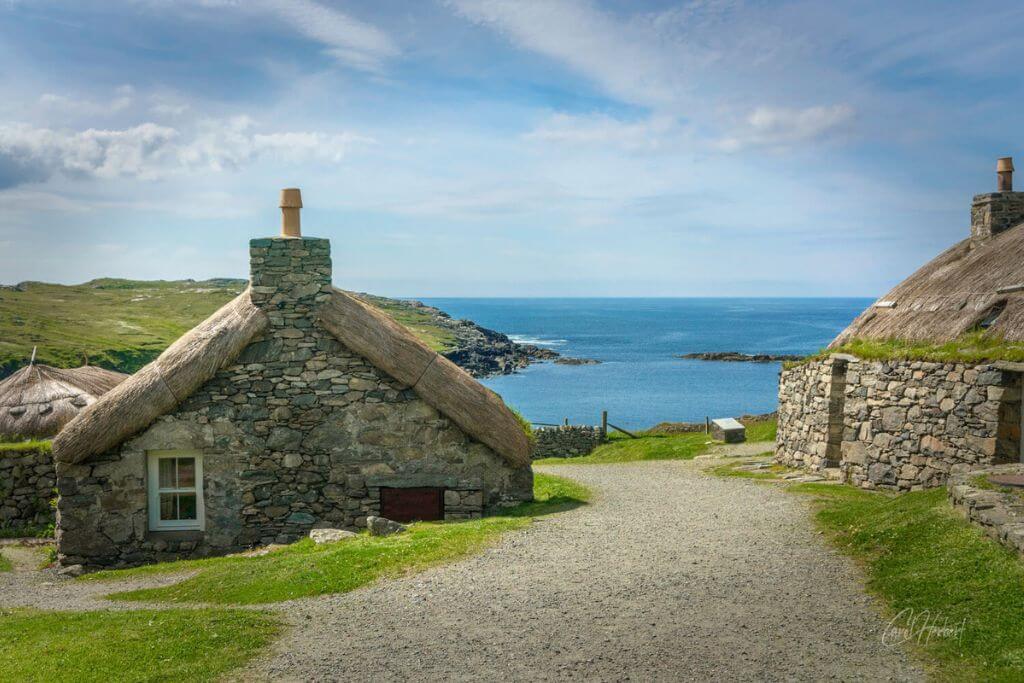
The Gearrannan Blackhouse Village is one of Lewis’s most fascinating tourist destinations. On a quiet harbor, this charming beach community is magnificently positioned.
The settlement has nine stone blackhouses with thatched roofs that are remarkably well-preserved. You will have the opportunity to experience the way of life that was prevalent in Lewis in the middle of the 20th century as you explore the settlement. finding out that these buildings were intended to host both people and animals. Crofters and fishermen, who were hard workers known for traveling great distances to make a living, were the people who first inhabited this area.
One of the things that makes this Village special is the fact that it was genuinely occupied up until the middle of the 1970s when the final residents moved out in search of more contemporary locations to live. After being abandoned, it deteriorated. The village was taken up by the Garenin Trust, which transformed it into what you see today.
5. Experience the Iron Age by visiting Dun Carloway Broch
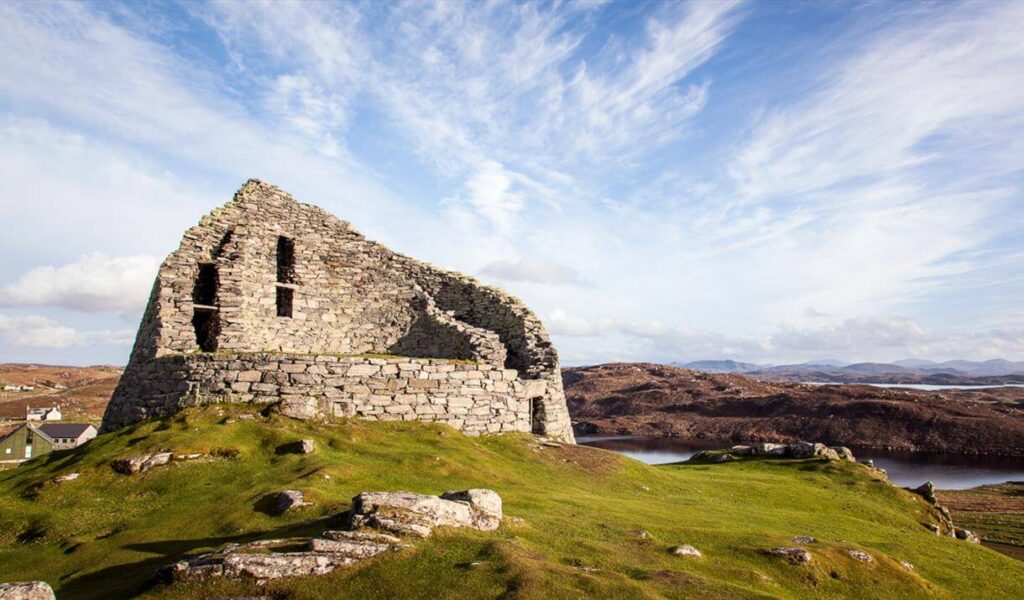
One of Scotland’s best-preserved Iron Age broches, the Dun Carloway Broch is situated in a lovely setting with a view of Loch Roag. It was presumably constructed in the last century BC and was used for both defenses and as a symbol of authority.
Because they are made of drystone, these round towers remind me of the Inca structures found in Peru. This indicates that they are entirely made of carefully placed, interlocking stones with nothing else holding them together. Given how well-preserved it is, the incredible construction is evident.
Historic Environment Scotland currently looks over Dun Carloway, which features a stunning visitor center with a display of what life was like in the Broch. A little parking area has a trail that is kept up nicely and offers wonderful views of the surrounding landscape. It’s not far to get to the Broch, and if you’re in Lewis and Harris, you must stop by.
6. See the Callanish Mystical Standing Stones (or Calanais)
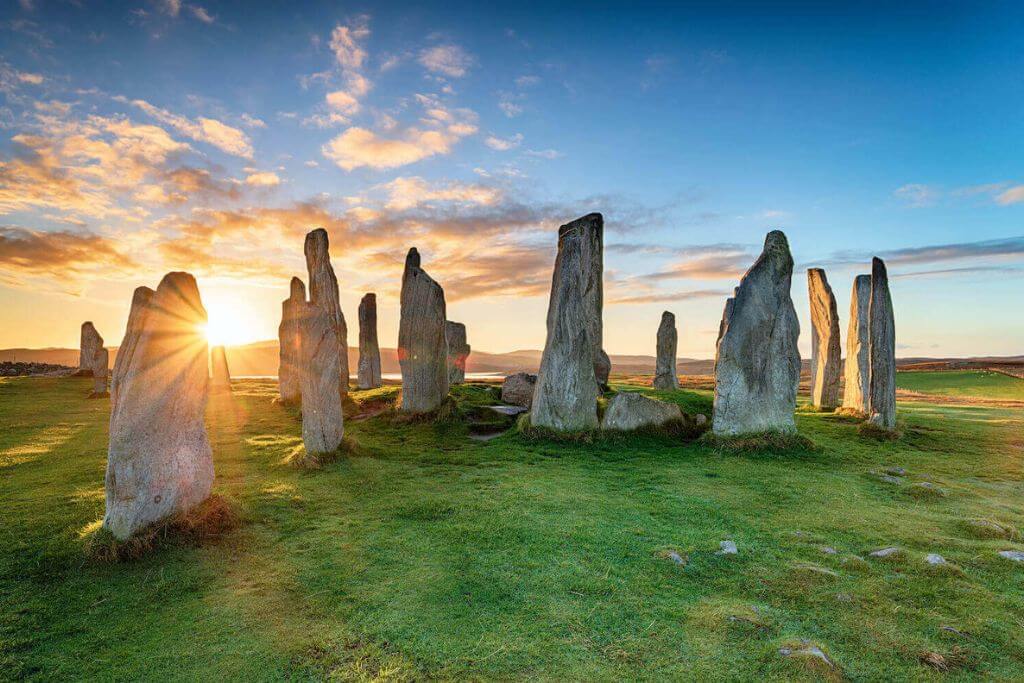
Every once in a while, you come across a location where it seems as though real magic permeates the atmosphere and affects everything you see. These locations appear to be rather common in Scotland. The Callanish standing stones are unquestionably on that list of amazing sites.
These Neolithic standing stones are older—by more than 5,000 years—and, according to some, more stunning than Stonehenge. The Callanish standing stones are actually one of the largest standing stone groups in Scotland.
There are several interesting theories about them. Some people think it was a house of worship. From the air, Callanish appears as a circle with rows of stones that resemble crosses leading to the center.
These may have been used to monitor the sun and moon’s cycles, according to another theory. The mysterious Calanais standing stones, no matter why they are there, are among the must-do activities in Lewis and Harris.
7. Take a Walk to MacLeod Stone and Enjoy the Stunning Views
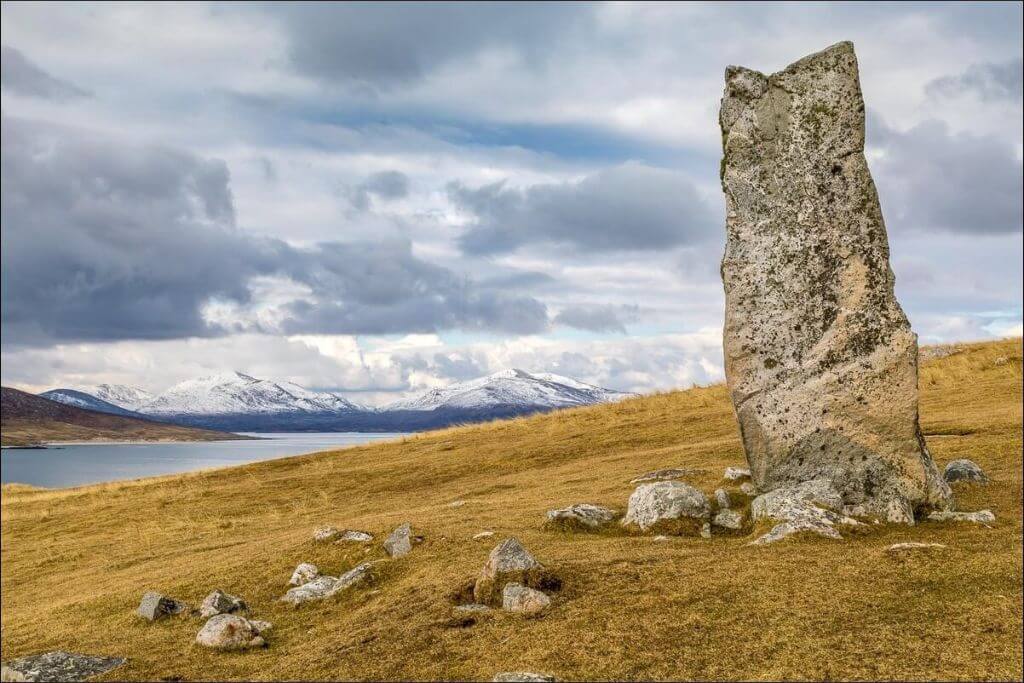
The MacLeod Standing Stone is perched on top of a hill overlooking the Seilebost seashore. The over 3-meter tall stone was constructed about 5000 years ago.
Although custom seems to link standing stones to graves, archaeologists very infrequently, if ever, discover that association with solitary stones. In light of this, the notion is that it symbolized a connection to the land. To demonstrate to others how the land was utilized.
Another hypothesis is that it served as a compass point for boats entering the Bay. Whatever the Stone’s purpose, it is not a tough trek, and the vistas are well worth it.
8. Visit St. Clements Church to view the Western Isles’ Finest Medieval Sculpture
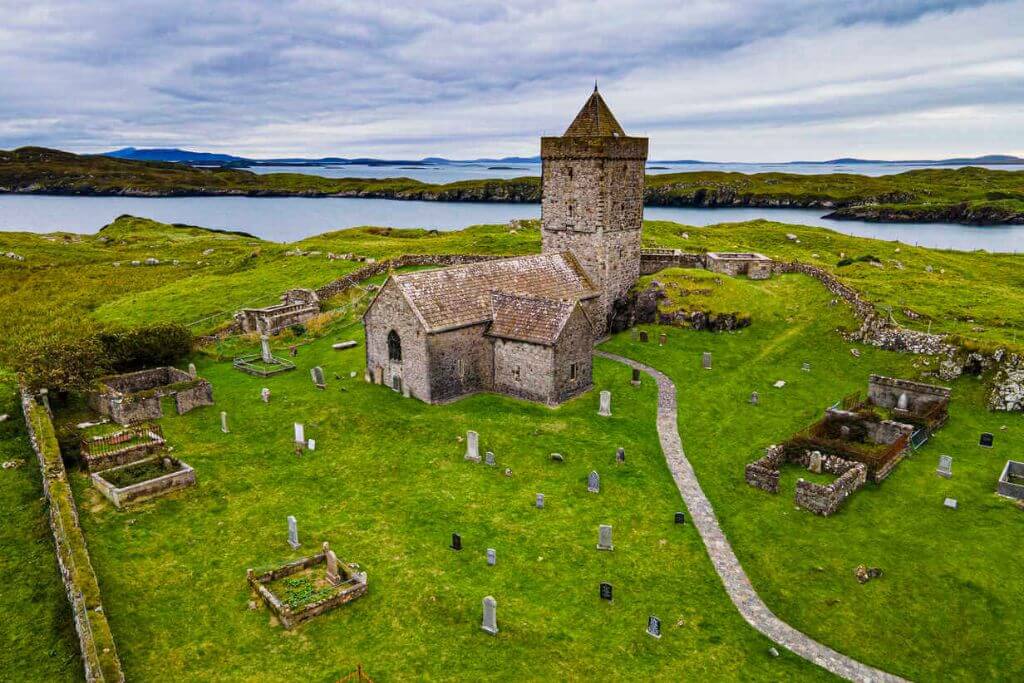
The most impressive medieval structure in the Western Isles is said to be St. Clements Church in Rodel. The acclaim stems from the fact that it is one of the few examples of a Roman Catholic chapel that avoided being vandalized during the Protestant Reformation in the 16th century.
It is a stunning gothic structure that is perched above a slight slope. Several MacLeods are interred in the cemetery of St. Clements Church, which was initially constructed for the Chiefs of the MacLeods of Harris. The tomb of the church’s founder, Alexandre MacLeod, is the most well-known of the rest. The best medieval sculpture in the Western Isles is a tomb that is carved into the south wall.
The graveyard does not have a view of the ocean, which is an odd fact given its lovely coastal position. Instead, the slope makes sure that it faces north toward the South Harris mountains. Nowadays, Historic Environment Scotland is in charge of the property.
9. Embark on The Golden Road
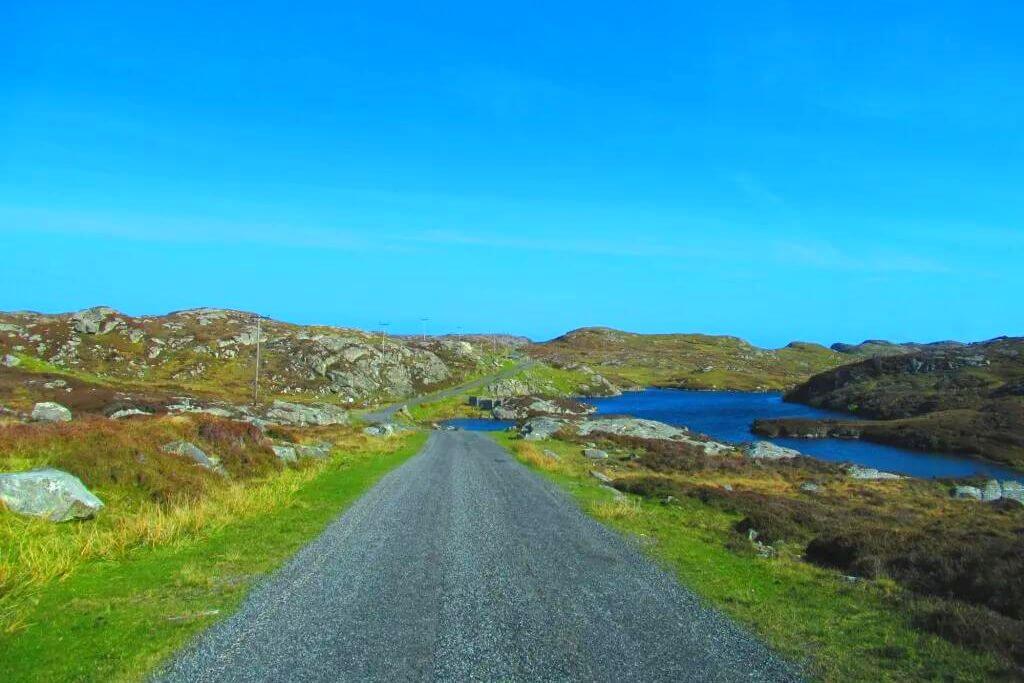
This single-track road through small communities, breathtaking coastline vistas, and glistening lakes are similar to most of the highways on Lewis and Harris. This is a fantastic chance to adapt to island life’s slower pace. So go ahead and take your time, slow down, and stop whenever you like. Get your legs moving while taking pictures. Just keep going down that golden path and take in the scenery.
10. Check out Callanish VIII
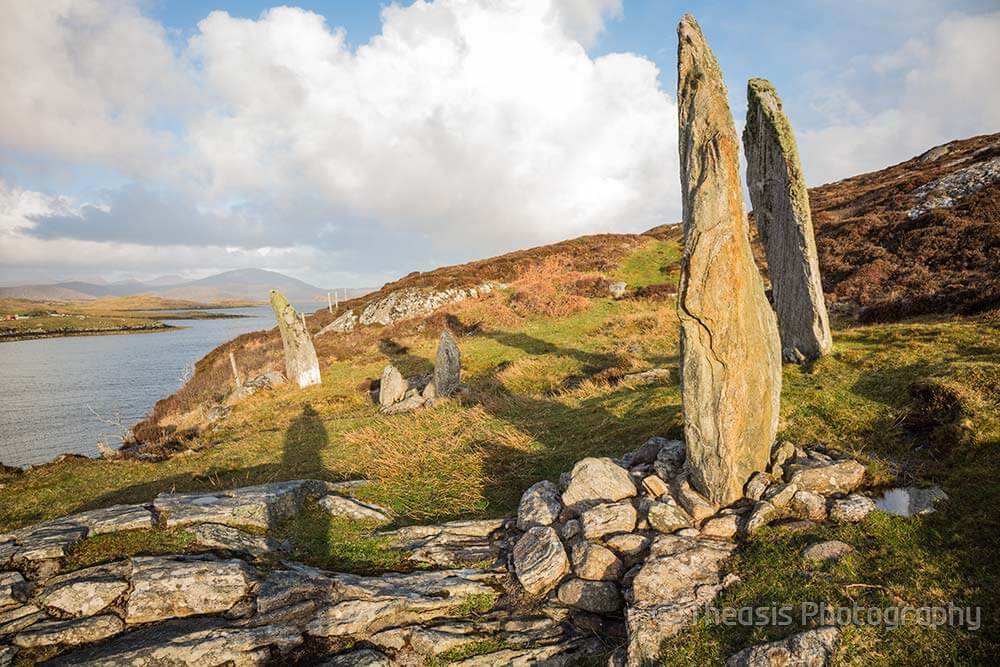
Locals refer to the Callanish VIII semi-circle as Tursachan, which literally translates to Standing Stones. This megalithic set of four standing stones can be found on your left as soon as you cross the bridge into Great Bernera. After that, you can park your vehicle in a tiny area to the right and walk up a short hill to see the stones.
While facing the waters that separate Great Bernera from the Isle of Lewis, the standing stones are placed in a semicircle. They are in a really attractive location as a result. They are, therefore, still one of my favorite standing stones and well worth the trip, despite not being as big and impressive as Callanish.
